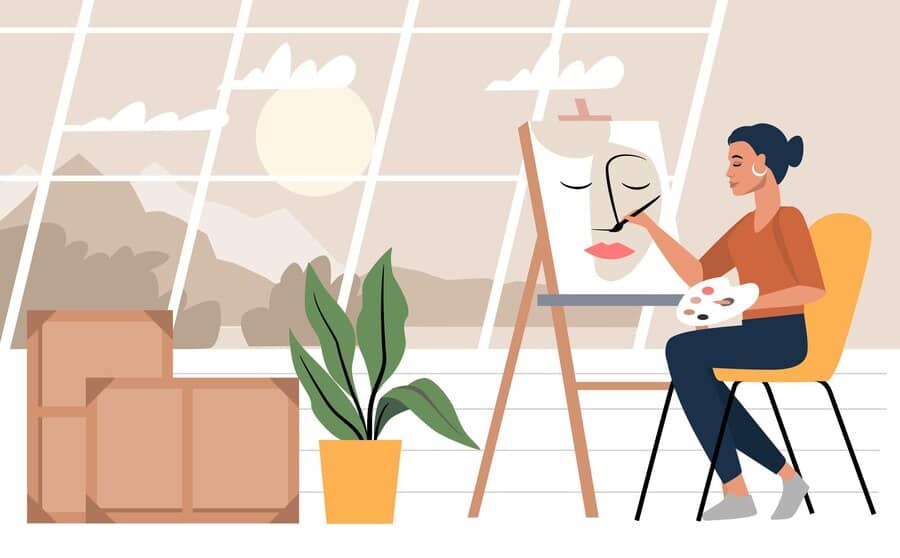Drawing and painting are two of the most popular forms of art that have been around for centuries. Whether you are an aspiring artist or just looking to enhance your creative skills, learning the fundamentals of drawing and painting is crucial. In this blog, we will explore the basics of drawing and painting, including the essential tools, techniques, and principles that every artist should know.
Top 10 Fundamentals Of Drawing And Painting
Tools and Materials
The first step in learning to draw and paint is to have the right tools and materials. Pencils, erasers, brushes, paints, and paper are some of the essential tools required for drawing and painting. Invest in good quality materials that suit your style and needs.
Understanding Form and Shape
Form and shape are the basic building blocks of drawing. Understanding the three-dimensional form of objects and their shapes is essential for creating realistic and visually pleasing artwork.
Light and Shadow
There is no doubt that light and shadow play a significant role in creating depth and dimension within an artwork. Learn to observe and study the way light falls on objects and how it creates shadows. This will help you create more realistic and detailed artwork.
Perspective
The purpose of perspective is to create the illusion of depth and distance in two-dimensional art. Learning the basics of perspective helps you create more realistic and appealing artwork.
Colour Theory
Colour plays a crucial role in enhancing a painting. Colour theory is the study of how colours interact with each other and how they can be used to create different moods and emotions in an artwork. Colour theory encompasses a wide range of concepts, such as hue, saturation, value, temperature, and complementary colours, among others. Understanding colour theory is vital for creating harmonious and balanced compositions. Experiment with different colour combinations and use colour theory as a guide to take your artwork to the next level and create truly stunning pieces.
Texture
The texture is another essential element of art that can considerably enhance the visual impact of an artwork. Understanding how to create different textures, such as smooth, rough, and grainy, will help you add depth and dimension to your artwork. Experimenting with different techniques, such as crosshatching, stippling, and scumbling, will help you create a variety of textures and add visual interest to your artwork. Texture can also be created through the use of different materials, such as sand, gesso, and modelling paste, which can be added to paint to create different effects.
Composition
In an artwork, composition refers to how the elements are arranged. It is essential to learn the principles of composition, such as balance, proportion, and focal point, to create visually pleasing artworks.
Line Quality
Line quality refers to the thickness, darkness, and sharpness of the lines used in a drawing or painting. It can significantly affect the overall look and feel of an artwork. Practising different line techniques will help you improve your line quality and create more dynamic and expressive artworks.
Anatomy
If you are interested in figurative art, understanding the human anatomy is essential. Learning about the different bones, muscles, and proportions of the human body will help you create more realistic and accurate representations of the human form.
Brushwork
Brushwork refers to the way in which paint is applied to a canvas or paper using a brush. It can greatly affect the texture and visual impact of a painting. Learning different brush techniques, such as wet-on-wet, dry-brush, and glazing, allows you to create a variety of effects and add depth and dimension to your paintings.
Conclusion
Learning the fundamentals of drawing and painting is essential for any artist. Understanding the basic tools, techniques, and principles of drawing and painting can help you create more realistic, visually appealing, and expressive artworks. So, go ahead and explore the world of drawing and painting, experiment with different tools and materials, and most importantly, have fun while you learn. Remember, practice makes perfect, so keep practising and honing your skills, and you will soon be on your way to creating stunning artworks.
